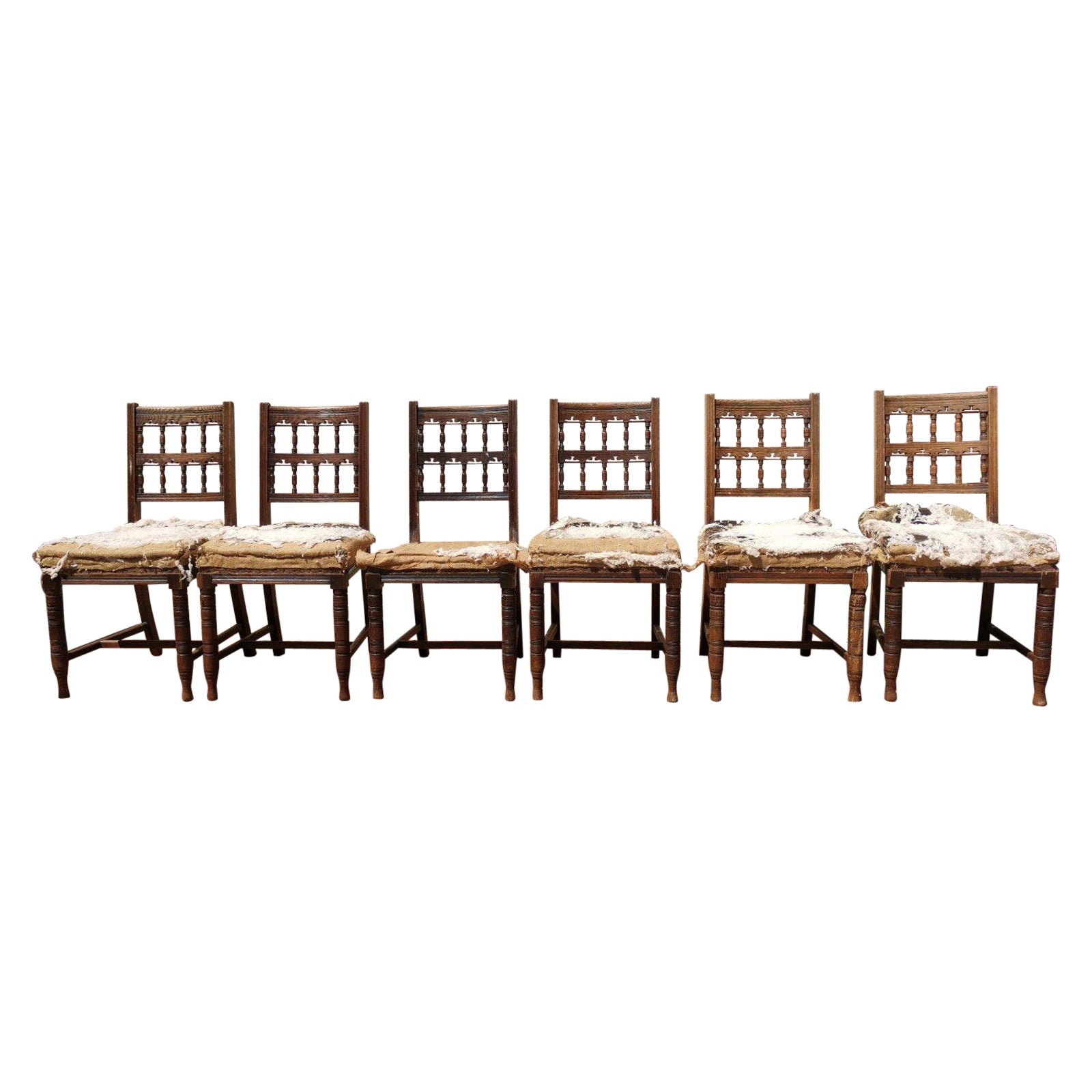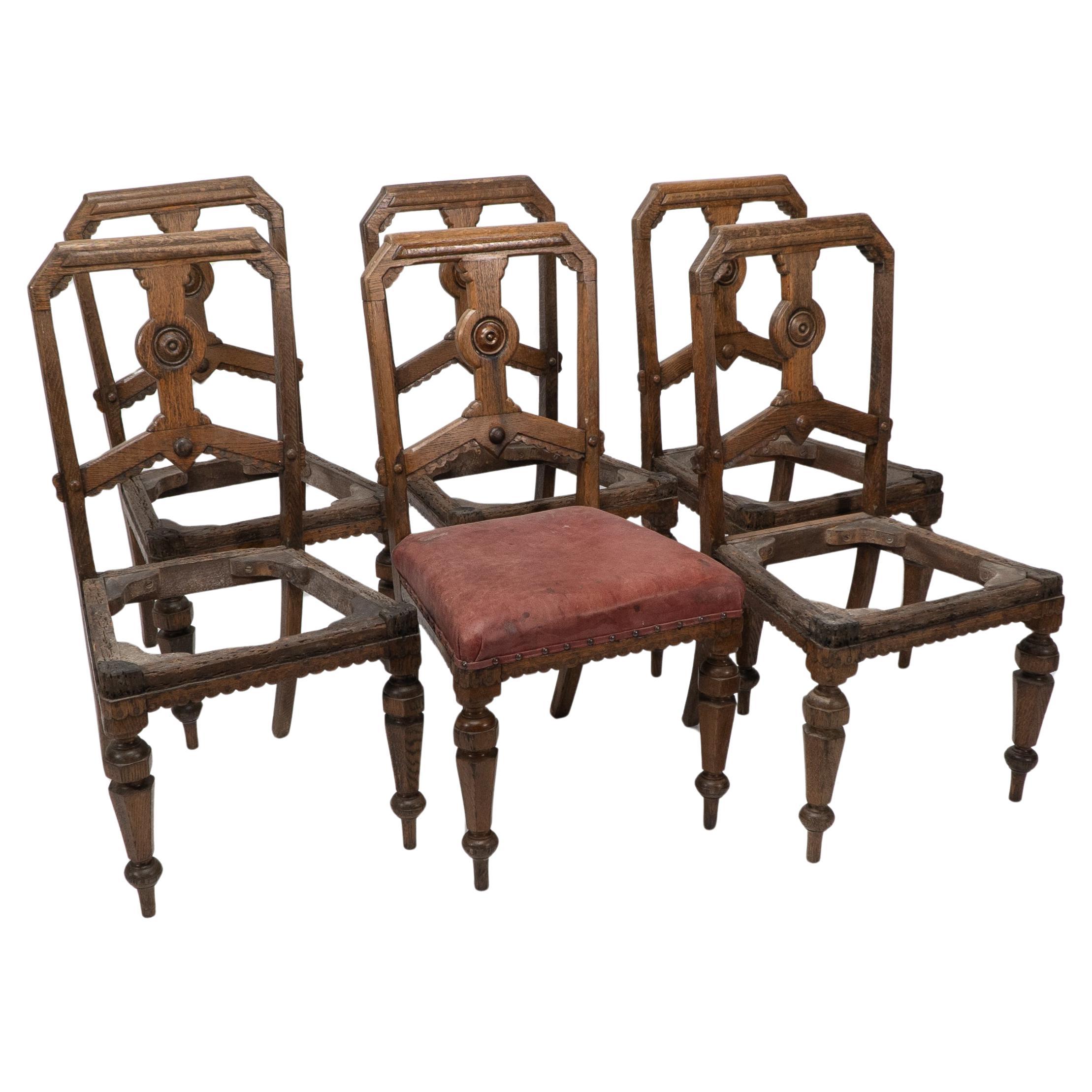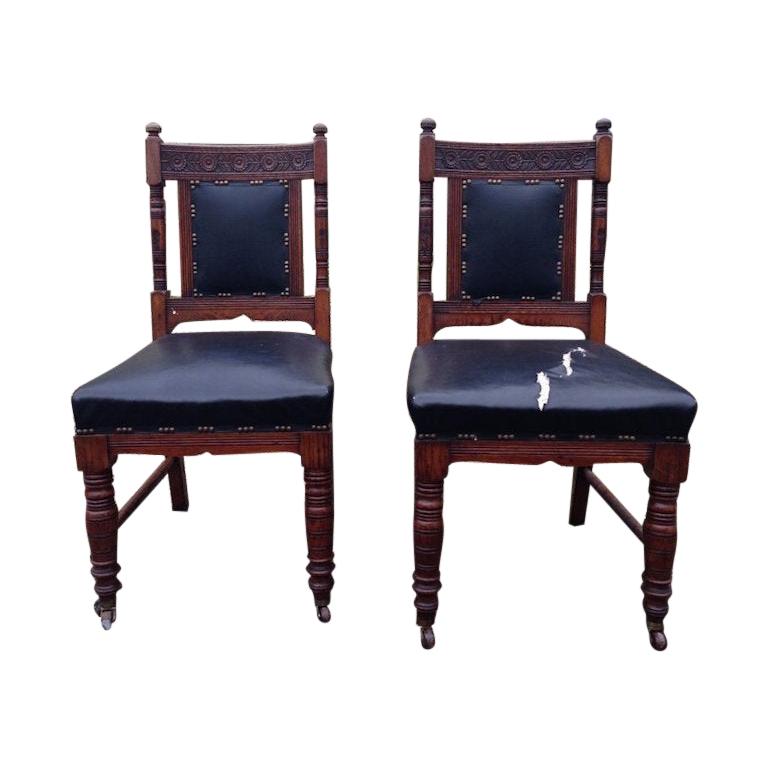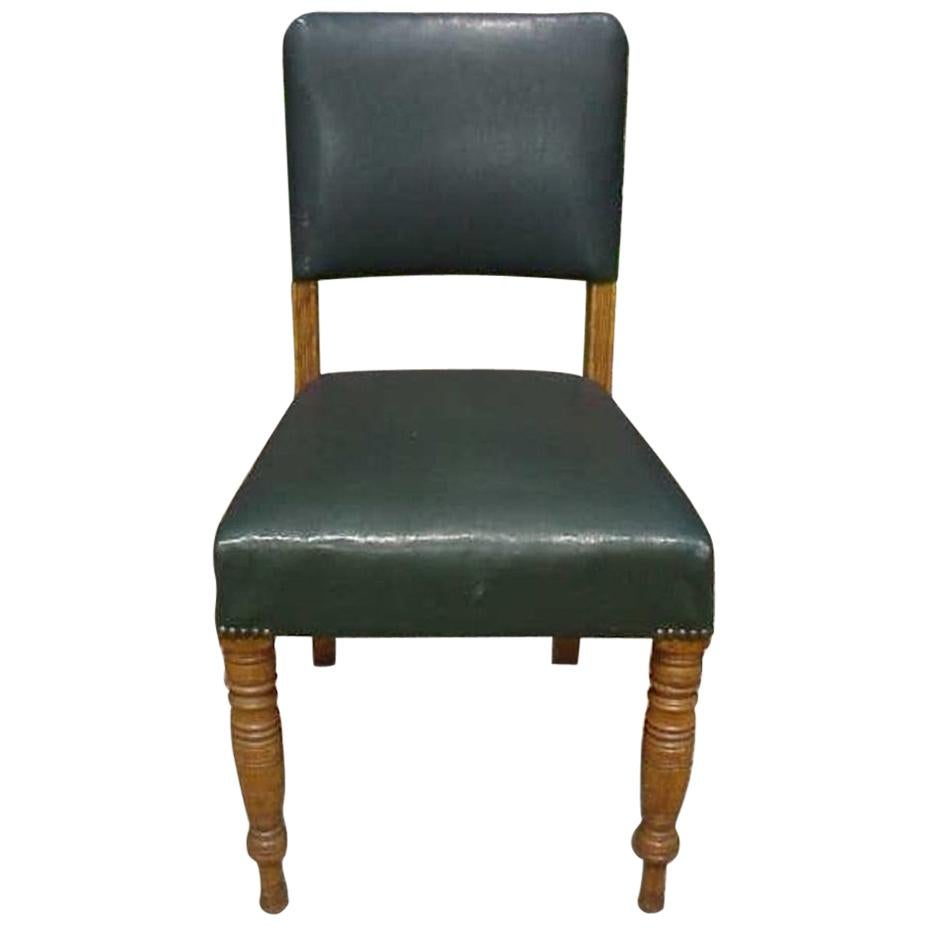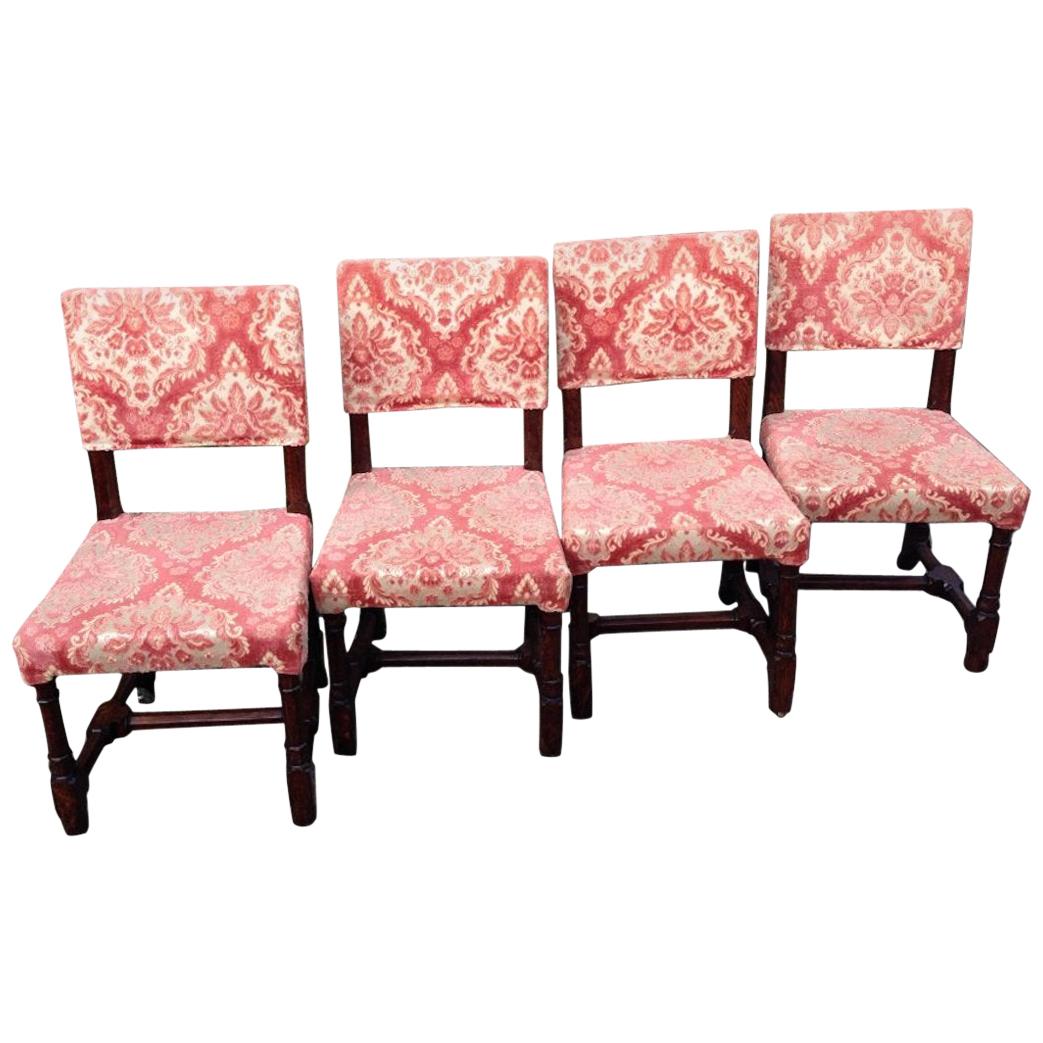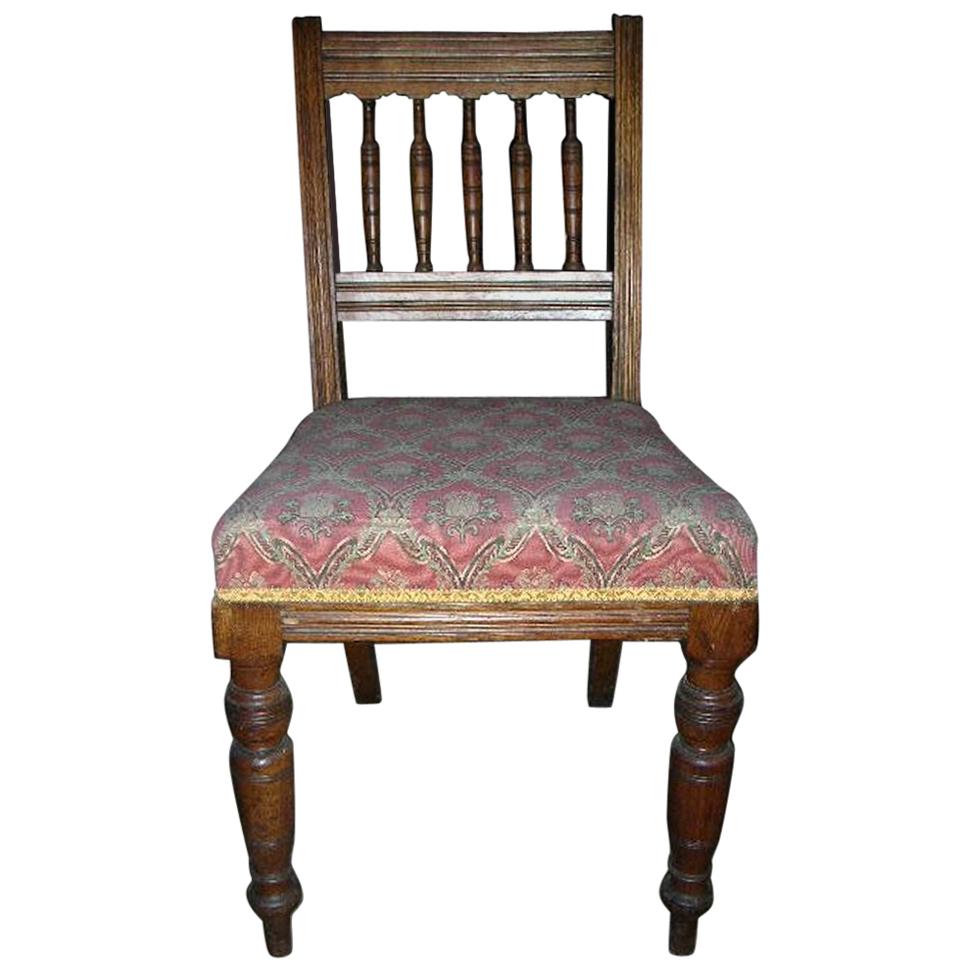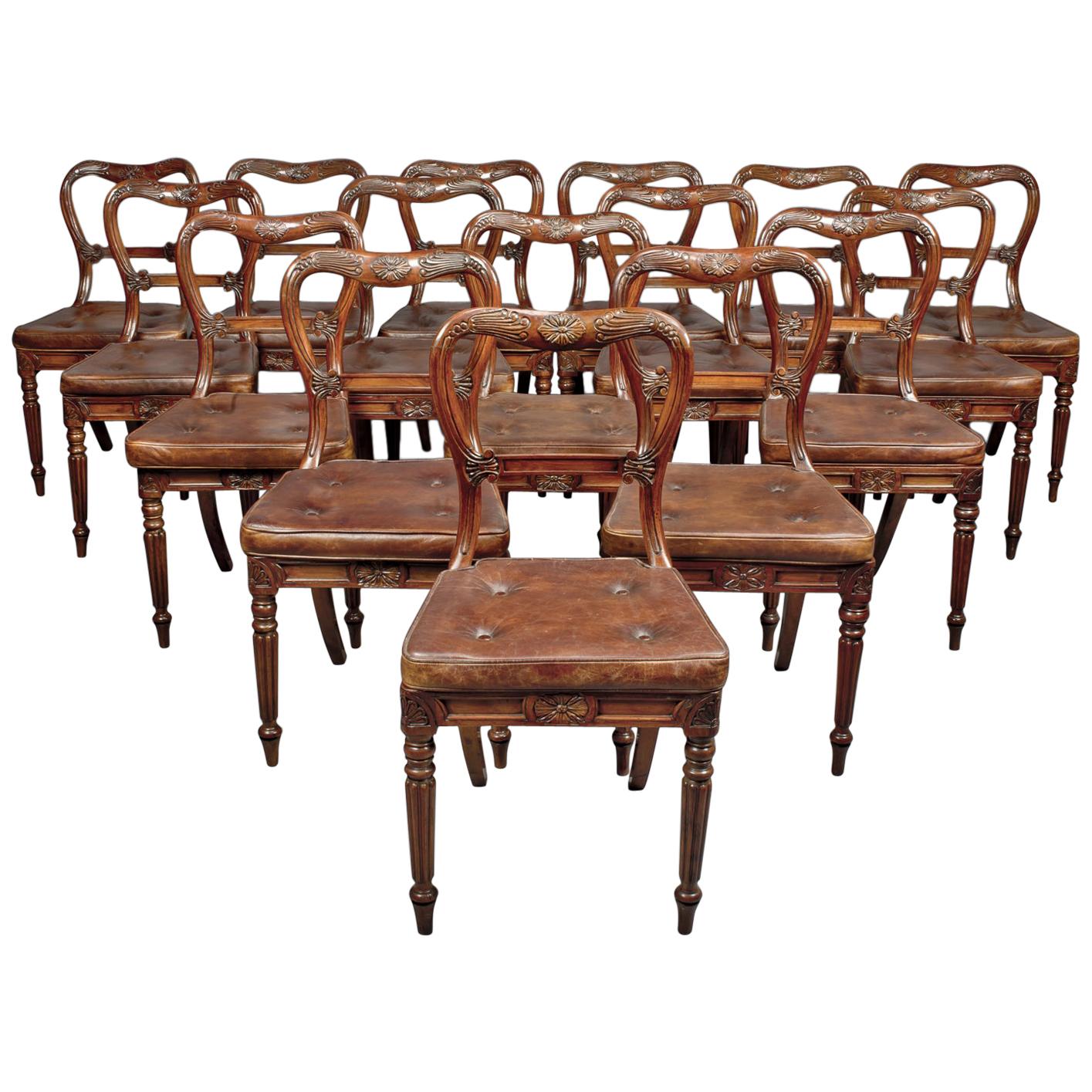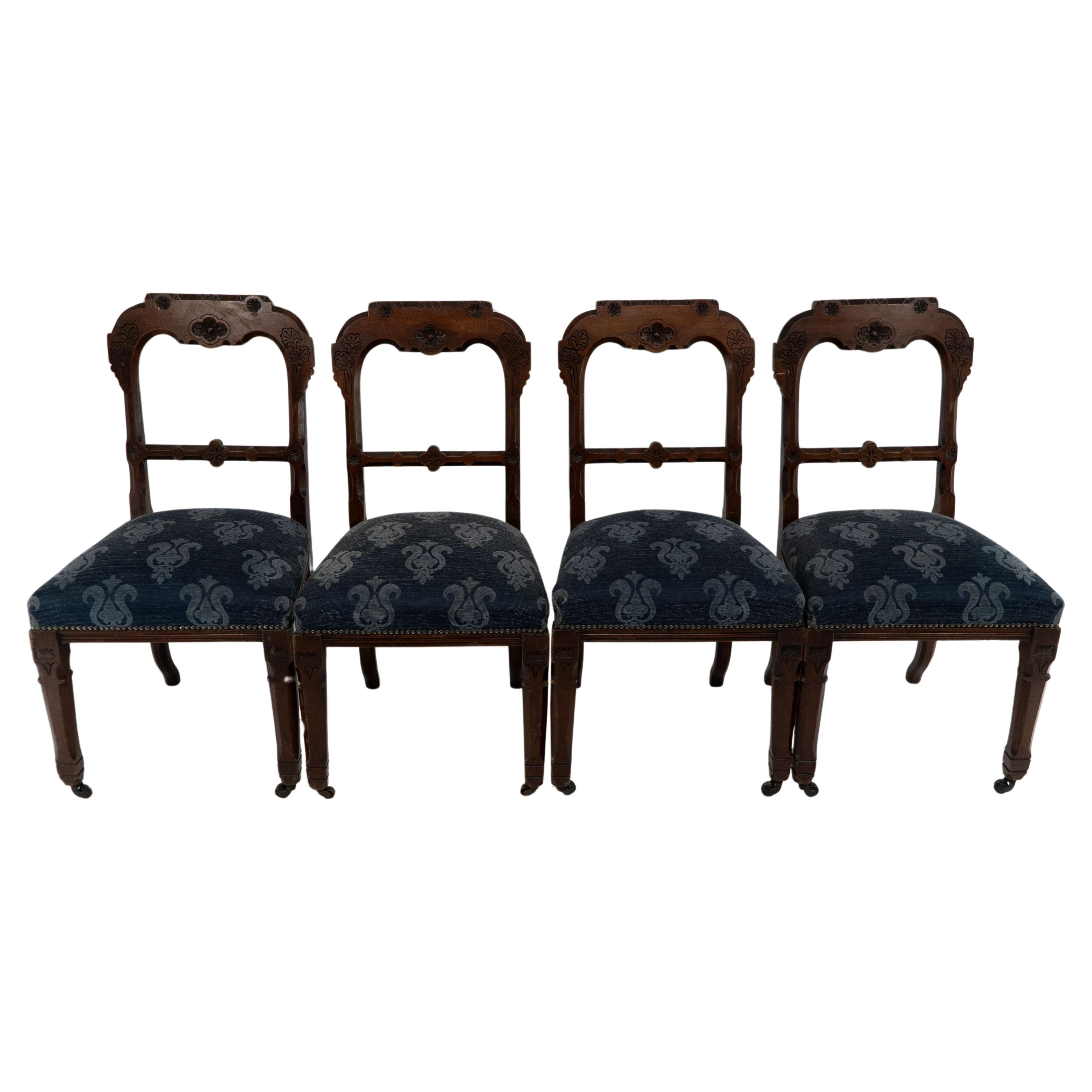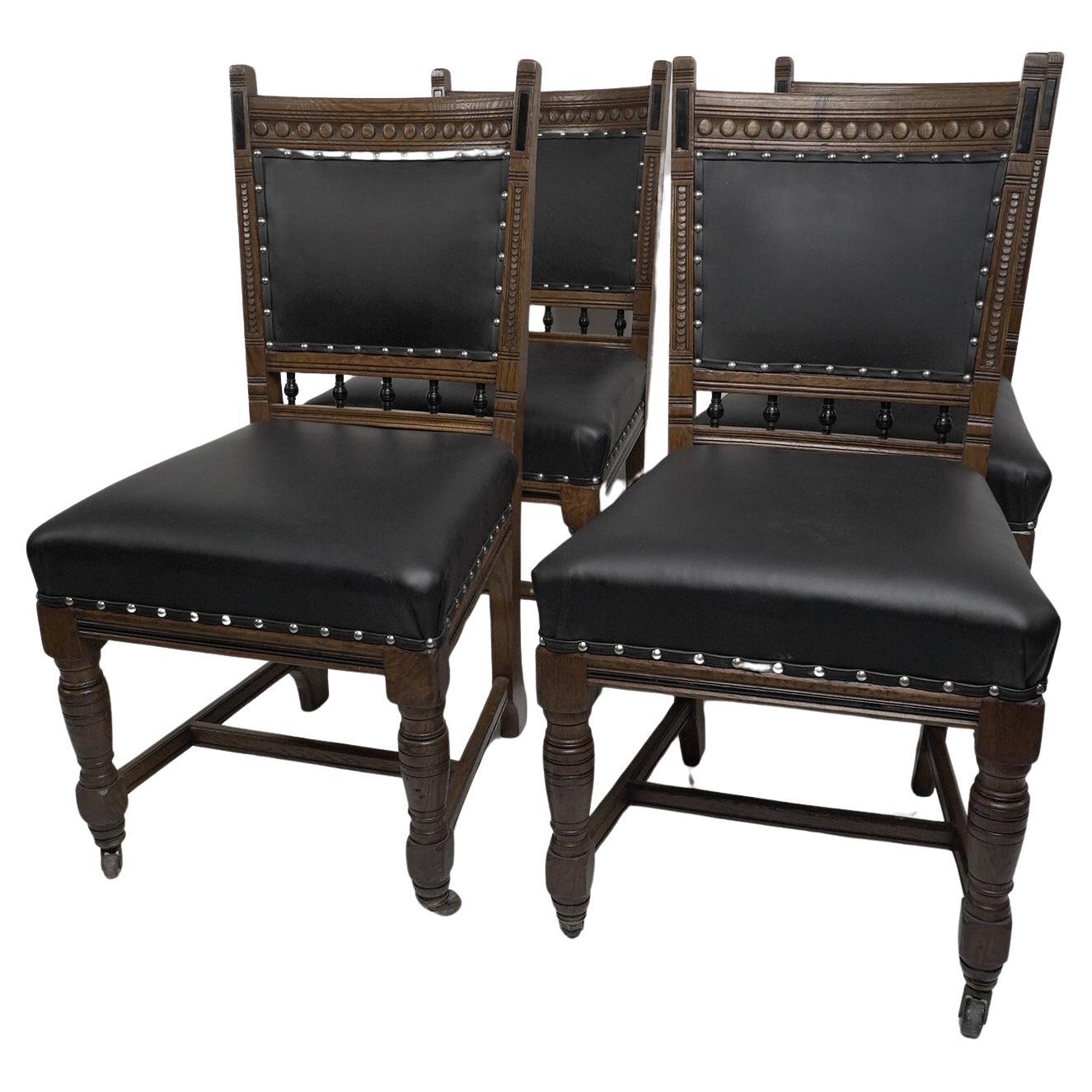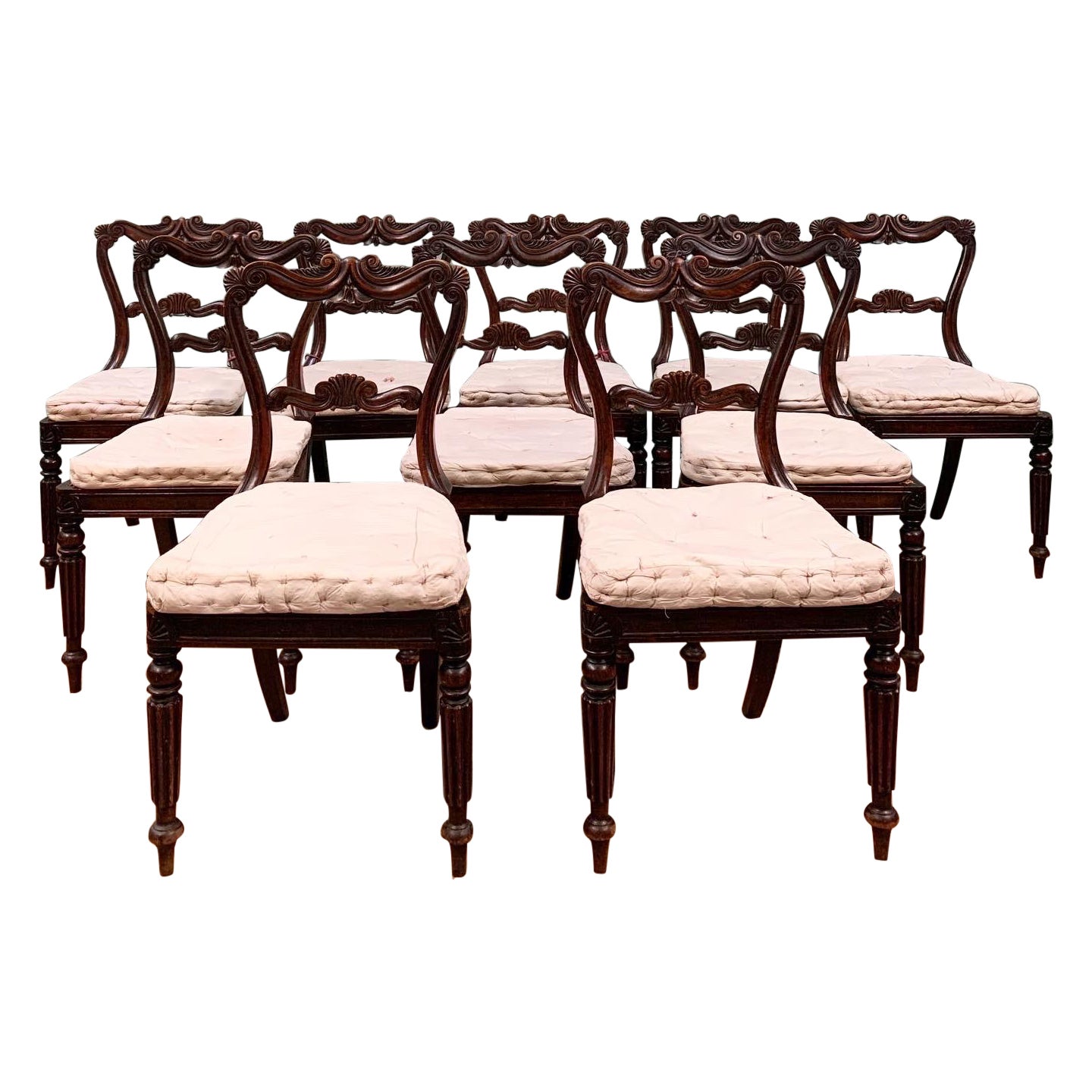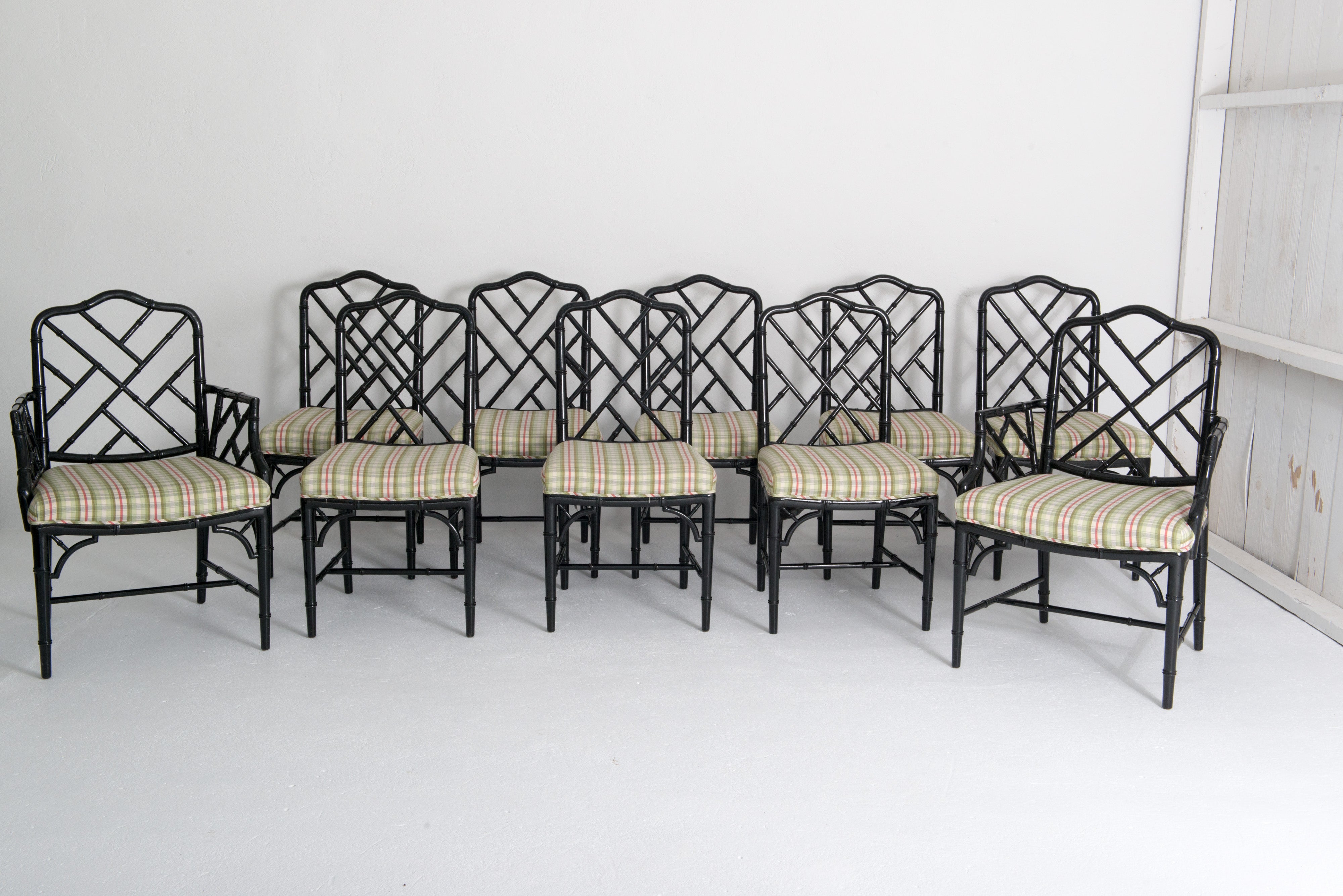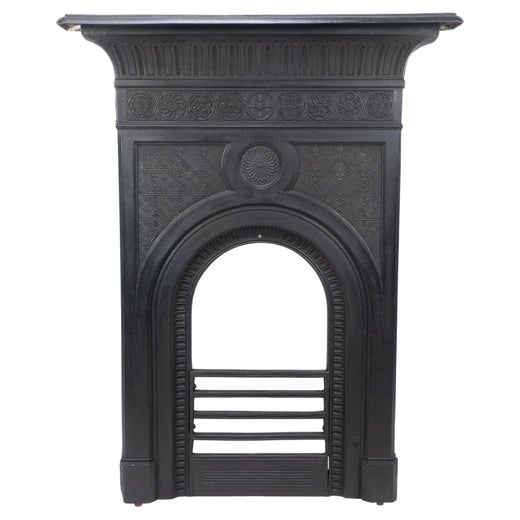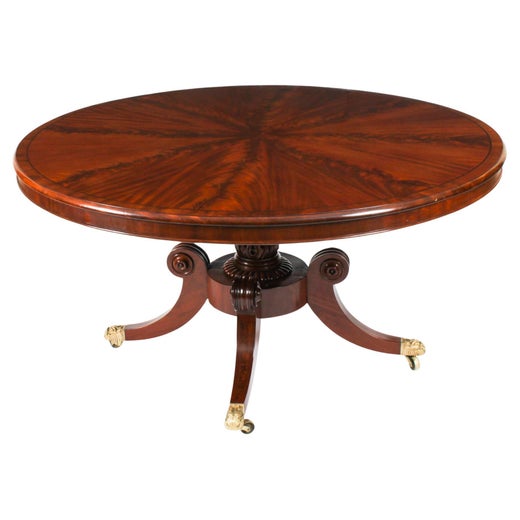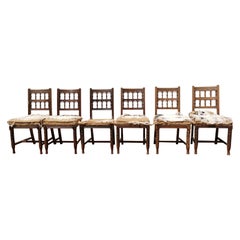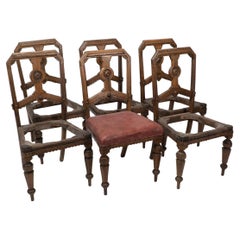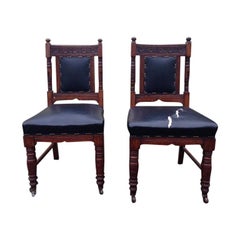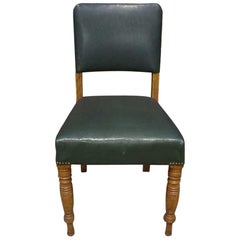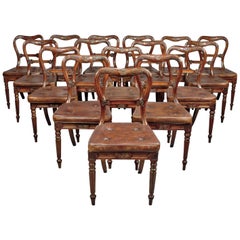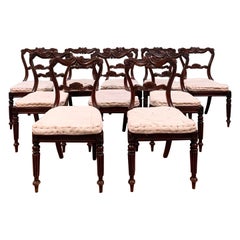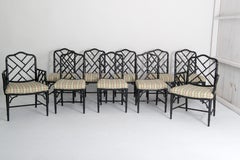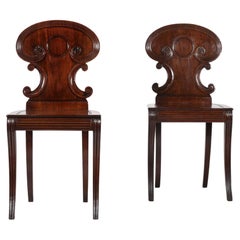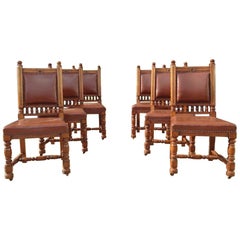
Thomas Jeckyll by Gillows, Aesthetic Movement, Rare Set of Ten Oak Dining Chairs
View Similar Items
Thomas Jeckyll by Gillows, Aesthetic Movement, Rare Set of Ten Oak Dining Chairs
About the Item
- Creator:Thomas Jeckyll (Designer),Gillows of Lancaster & London (Maker)
- Dimensions:Height: 39 in (99.06 cm)Width: 19.5 in (49.53 cm)Depth: 21.5 in (54.61 cm)Seat Height: 17.75 in (45.09 cm)
- Sold As:Set of 10
- Style:Aesthetic Movement (Of the Period)
- Materials and Techniques:
- Place of Origin:
- Period:
- Date of Manufacture:1870
- Condition:
- Seller Location:London, GB
- Reference Number:1stDibs: LU2243322288072
Thomas Jeckyll
Thomas Jeckyll was a master of metalwork during the Victorian era. He achieved great success as an architect and his legacy lives on through his gorgeous metal interior design fittings like fireplaces and mantels. Jeckyll’s furniture designs, which include dining room chairs and writing desks, demonstrate his ornate touches and exquisite attention to detail.
Jeckyll’s career began in East Anglia, England, in the 1850s and 1860s. He restored historic buildings and designed schools and rectories in the Gothic Revival style. He also restored churches and built new ones, most notably the Holt Methodist Church in Norfolk.
From 1865 to 1872, Jeckyll worked on the furniture and interior of the Oak Parlour at Heath Old Hall in Wakefield, where he combined Elizabethan and Jacobean styles with Moorish and Japanese influences. Around the same time, he worked on Rance’s Folly, a five-story townhouse in Cambridge, which he restored in the graceful Queen Anne style.
His most famous commission came in 1876 when he was tasked with restoring and redecorating 49 Prince’s Gate in London, then the home of Frederick Richards Leyland, a transatlantic shipping magnate. Jeckyll incorporated Dutch leather, walnut shelving and blue-and-white Chinese porcelain into the design.
Jeckyll died in 1881. In 2003, the Bard Graduate Center in New York City held the first-ever exhibition of his works. “Thomas Jeckyll: Architect and Designer” showcased 160 pieces of furniture, metalwork, textiles, architectural fragments, photographs and other elements to provide an overview of the designer’s life and career.
Jeckyll’s work continues to resonate with today’s designers and architects. David Scott Parker, in his Associated Artists gallery, carries works by Jeckyll as examples of English Aesthetic Movement furniture.
On 1stDibs, find antique Thomas Jeckyll fireplace elements, seating, tables and more.
Gillows of Lancaster & London
It would be difficult to find an antique furniture enthusiast or collector unfamiliar with the name Gillows of Lancaster and London. The British furniture company — which has earned references in the writings of Jane Austen and elsewhere in literature — is renowned for its exceptional quality craftsmanship, and attracted designers such as Thomas Chippendale, Thomas Sheraton and George Hepplewhite in its heyday.
The firm was founded circa 1730 by Robert Gillow (1704–72), who worked as a joiner, housebuilder and overseas merchant before making furniture for homes and export. Gillow established his business in his home city of Lancaster. However, the company later expanded into London in the 1750s after Robert entered into a partnership with his son, Richard, who apprenticed with a London architect and learned the merchant trade in Barbados. Richard had entrepreneurial aptitude — he managed apprenticeships at the firm, ensured that quality materials were a priority, navigated economic hardships, and designed furniture, too. He created seating based on sketches drawn by his cousin, James Gillow, in London.
London’s wealthy upper class took notice of the Gillows’ high-quality furniture, which came to include bedroom furniture, cabinets, a range of seating and other pieces made of rosewood or rich mahogany imported from the West Indies and Jamaica. By the end of the 18th century, the manufacturer was one of the leading furniture makers in Britain. Gillows designed its own furnishings and worked with significant designers; they had in-house upholsterers and cabinetmakers and employed decorative techniques such as “japanning” in their designs.
Gillows of Lancaster and London became Gillow & Co. in 1813 after selling to Redmayne, Whiteside and Ferguson. The company continued to thrive throughout the Georgian era and into the Victorian period, a time that yielded well-known collaborations with Scottish architect and designer Bruce Talbert on a regular basis. High-brow clients of the manufacturer clamored for their inventive and functional designs for tables and writing desks, many of which incorporated whimsical elements such as secret and pop-up drawers. There was also demand for earlier Gillow designs such as Baroque and Gothic Revival pieces as well as adaptations of Chippendale works.
Despite their success, Gillow & Co. entered into financial hardship during the late 1800s with the advent of mass-produced furniture. By 1903, they merged with Waring of Liverpool to become Waring and Gillows and, in 1980, were taken over by Maple & Co. to become Maple, Waring and Gillow. Today, many Gillows of Lancaster and London pieces are in museums throughout the United Kingdom, New Zealand and Australia.
Find antique Gillows of Lancaster and London furniture on 1stDibs.
More From This Seller
View AllAntique 1880s English Aesthetic Movement Dining Room Chairs
Oak
Antique 1880s English Aesthetic Movement Dining Room Chairs
Oak
Antique 1880s English Aesthetic Movement Dining Room Chairs
Oak
Antique 1880s English Aesthetic Movement Dining Room Chairs
Oak
Antique 1880s English Aesthetic Movement Fireplaces and Mantels
Walnut
Antique 1880s English Aesthetic Movement Fireplaces and Mantels
Berlin Iron
You May Also Like
Antique Early 19th Century English Dining Room Chairs
Walnut
Antique Early 19th Century English George IV Dining Room Chairs
Cane, Beech
Vintage 1970s Dining Room Chairs
Wood
Antique Early 19th Century English Regency Chairs
Mahogany
Antique 1860s English High Victorian Dining Room Chairs
Leather, Hardwood
Vintage 1930s Danish Art Deco Dining Room Chairs
Leather, Mahogany
